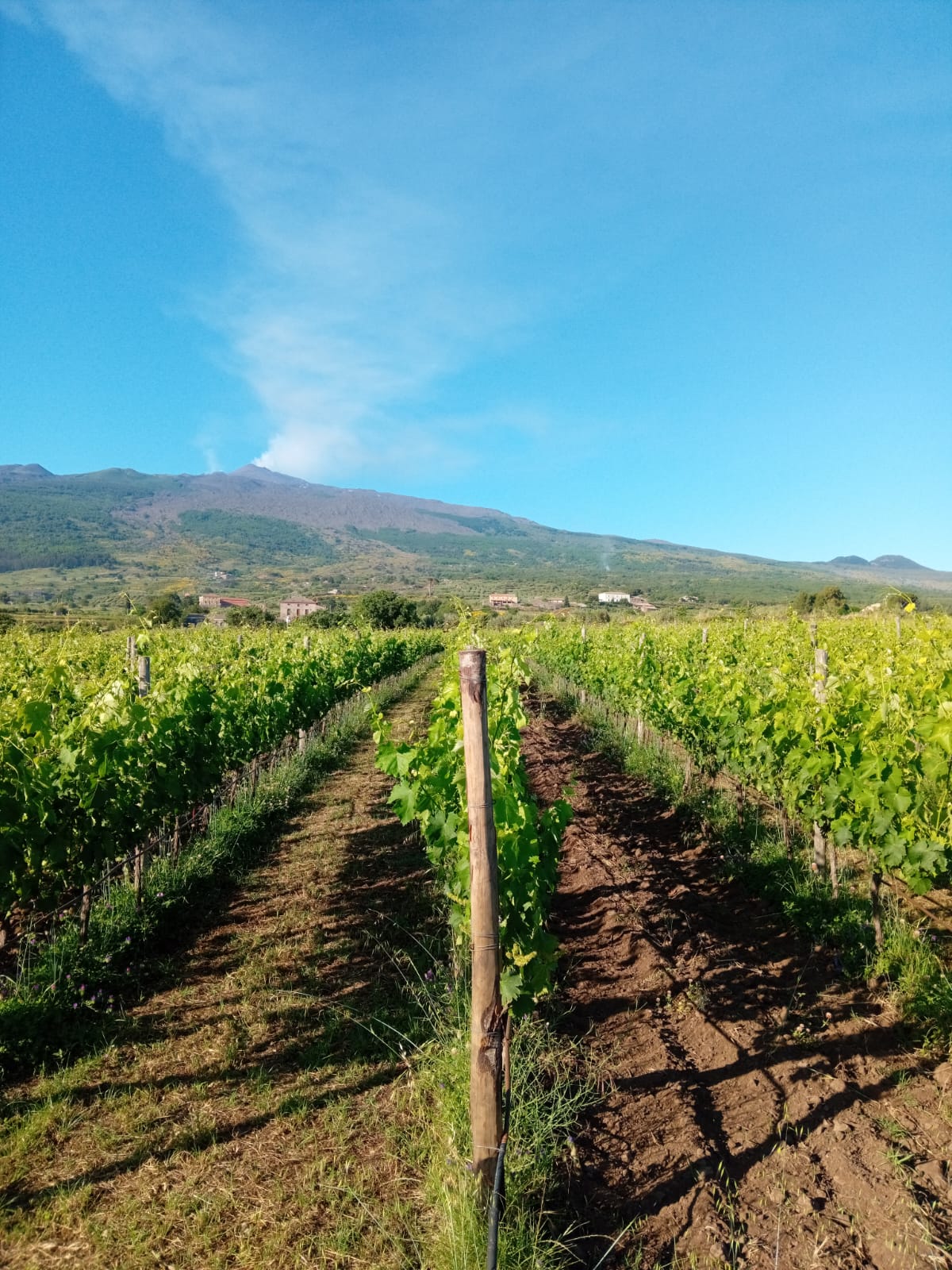Dramatic shots of huge plumes of ash bursting from Mount Etna yesterday sent the media into frenzy, but, at least as far as this Sicilian region's wine industry is concerned, it's business as usual.
Shots of tourists stampeding down the slopes of Etna as the a huge cloud of grey ash mushroomed behind them resembled scenes from a Hollywood disaster movie, with the speed and scale of this latest eruption capturing the world's attention.
Monitoring the situation was the Istituto Nazionale di Geofisica e Vulcanologia (INGV), with its Etna observatory posting regular updates, with 'Strombolian activity' noticed in the early hours of yesterday morning (2 June), which followed tremors the evening before (1 June).
An INGV report published yesterday evening revealed that there had been three main lava flows, all of which were by then in the 'cooling phase'. The pyroclastic flow reached the northern wall of the Bove valley, and there were reports of some fallout at Cesarò and Bronte – the latter, on Etna's western slope, being best known for its pistachio production. It seems that ash deposition has been minimal.
Among those to reassure that the volcanic eruption was not something to worry about was Sicily's regional president, Renato Schifani, who said that it "posed no danger to the population" – the high altitude of this eruption being a big reason why.
Not a big deal
It appears that yesterday's eruption, which coincided with Italy's Festa della Repubblica public holiday, was not of particular concern to the wineries situated around the volcano either.
"Yesterday morning there was a landslide generated by the partial collapse of one of Etna's craters. Nothing we had not seen before, but bigger this time," shared Salvino Benanti, custodian of his family's 35ha Etna estate alongside his brother, Antonio. "Everything happened at high elevations, as always, and the sliding pyroclasts first poured into the Valle del Leone and eventually came to a halt in the Valle del Bove (the deep depression on Etna's eastern flank)."
Benanti also said that it has not been a particular inconvenience: "All ok so far, things have gone back to normal. The vineyards are largely unaffected. The thick rocks were quite heavy and landed near the eruption site, at high elevations, whereas the thinner sand does not bother us much."
Indeed, some wine producers from the region were even bemused as to why people around the world were interested in it.
"Today's [yesterday's] volcanic activity is part of the normal activity of Etna and has no impact on population and properties as it is confined to the top of the mountain," Etna Urban Winery's Nicola Purrello told
db. "We are quite surprised at the kind of international coverage this generated, it should not really be news."
Among those still planning on visiting Etna's vineyards this week is famed wine critic James Suckling, who posted on
social media: "Gearing up for a trip there [Etna] Wednesday morning — and the volcano erupted today. But producers say we’re still good to go!"
It makes sense that wineries are fairly relaxed – eruptions are, after all, part of life on Europe's most-active volcano. According to the Smithsonian's Global Volcanic Program, there have been almost 150 significant eruptive episodes from Etna during the holocene (the last 11,700 years). Quite possibly the most deadly came in 1669, when lava flows destroyed several villages and even part of Catania, the nearest major city.
However, although yesterday's eruption was a flash in the pan, it was nevertheless a big one, reportedly being the strongest since 2014. At present, it appears that no-one has been hurt and no property damaged by it. Catania Airport even continued to operate, though with some delays, throughout the course of this volcanic episode.
























































































































































